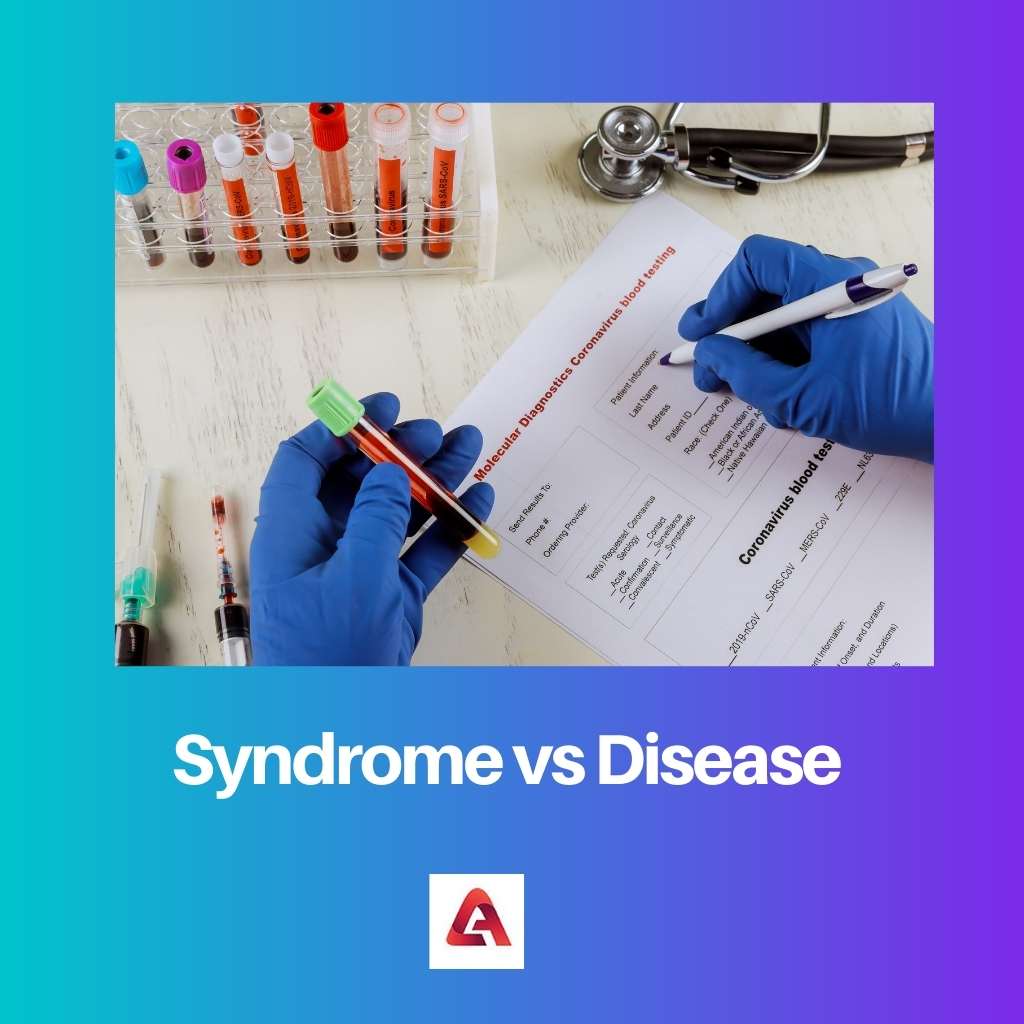When it comes to medical science, covers a lot of scientific terms in which, many of which are pretty confusing. Among confusing terms, syndrome and disease are two of them every time puzzle mostly whenever they visit a doctor.
For a layperson, both terms are similar and used interchangeably.
For instance, AIDS is a syndrome, and cancer is a disease. The chief reason behind their calling separately is that these seemingly similar terms are distinct in their meaning.
In this article, the main focus is on differentiating syndrome and disease.
Key Takeaways
- A syndrome is a group of symptoms and signs occurring together, whereas a disease has a specific cause, a pathogen or genetic mutation.
- Syndromes may have various underlying causes, while diseases have a single, well-defined cause.
- A syndrome diagnosis relies on clinical presentation and patient history, while diseases may be diagnosed using laboratory tests and imaging.
Syndrome vs Disease
The difference between syndrome and disease is their treatment. The reason behind the syndrome is failed chiefly to be found, that temporary medication described for controlling the syndrome’s symptoms. On the other hand, for the underlying cause behind the disease, a proper treatment and diagnosis procedure is done.

The term syndrome is used to refer to a symptom collection that is ongoing. Sometimes, it is thought that a syndrome is mainly attributable to some diseases.
The syndrome can be generic or from causes that are unknown and fails to have an apparent effect and cause type connection.
The body disease can be described as a medical condition that disrupts the physiological processes and normal functioning. Every disease has its symptoms and signs attributed to it.
Hereditary, pathogenic, deficiency, and physiological are four kinds of diseases that are accepted.
Comparison Table
| Parameters of Comparison | Syndrome | Disease |
|---|---|---|
| Interpretation | It is a specific abnormal condition that negatively affects the Organism and is not due to immediate external injury. | Word Origin |
| Not producing such change | From the Greek | From the old French |
| Change in anatomy | Not produce such change | Consistent change |
| Cause | Not traceable to a single cause | Established single cause |
| Example | Chronic fatigue syndrome, irritable bowel syndrome, and polycystic ovary syndrome. | Tuberculosis, the common cold, and hepatitis A and B. |
What is Syndrome?
In the Canon of medicine, the syndrome’s idedisease’sneered and the particular disease’s diagnosis. In the 17th century, Thomas Sydenham further developed this related to the medical syndrome.
Dysmorphology describes tsyndrome’sine which deals with the sysyndrome’siagnosis.
In medicine, the syndrome’s border definition refers to findings and symptoms collection without trying them necessarily to single identifiable pathogenesis.
When it comes to psychiatric syndromes, which are referred to as psychopathological syndromes describe both psychic dysfunction occurring in mental disorders.
Suppose an underlying cause of genetics is suspected but not known, a condition might be called a genetic association. By definition, it indicates that the collection of symptoms and signs occurs more frequently in combination than chance alone.
Down syndrome is a usual genetic disorder caused due to cell division in an odd way and results in a partial or extra full copy of the 21 chromosome. Due to this additional genetic material, physical features and developmental changes occur.

What is Disease?
Diseases are referred to as a medical conditions linked with particular symptoms and signs. It might be caused due to external factors like pathogens or internal dysfsystems.
For instance, the immune system’s internal dysfunction can lead to different diseases variety consisting of several forms of hypersensitivity, autoimmune, immunodeficiency, and allergies disorder.
Disease in humans is used more broadly to describe any condition that leads to distress, pain, social problems, death, or dysfunction in the person afflicted.
Not only physically, but the disease can also affect mentally because living and contractlife’sth the condition can alter the life perspective of the affected person.
When the disease becomes the reason for death,, it is referred to as death by natural causes. Only some diseases like influenza are contagious and believed infectious.
A disease-causing microorganism is called a pathogen and contains various fungi, bacteria, protozoa, and viruses.
Coronary artery disease, or simply blood flow obstruction, is the deadliest disease followed by cerebrovascular disease and lower respiratory infections.
Neuropsychiatric condition is one of the most sickness-causing diseases in developed countries, including anxiety and depression.

Main Differences Syndrome and Disease“
- The word “syndrome” comes “from the “sundramein” in which “sun” means together, and “dramein” means to run. Later, from Greek, as sundramein translated into syndrome by modern Latin. Conversely, the word disease comes from the “desaise” in which “dis” means expressing reversal and “aise” means ease. Later, from old French desaise translated into the disease by middle English.
- Most of the syndrome is named after the physician who was the first to discover them in people. For instance, position namely Dr down Marfan was the first to notice the condition of Down syndrome. But when it comes to disease, no such pattern follows.
- When it comes to a syndrome, it is a kind of a medical mystery because the reason behind most of the syndrome to date is still not found. On the other hand, it is easy to identify the reason behind the disease.
- Across the world, there are approx 2700 syndromes. Which most common are Down syndrome, cystic fibrosis, and thalassemia. On the contrary, at least across the world, there is 10,000 most common disease are heart disease, diabetes, and cancer.
- In terms of treatment, temporary medications are prescribed for controlling the syndrome’s symptoms because the reason behind them is mostly failed to be found. On the flip side, a proper treatment and diagnosis procedure is done for the underlying cause behind the disease.




